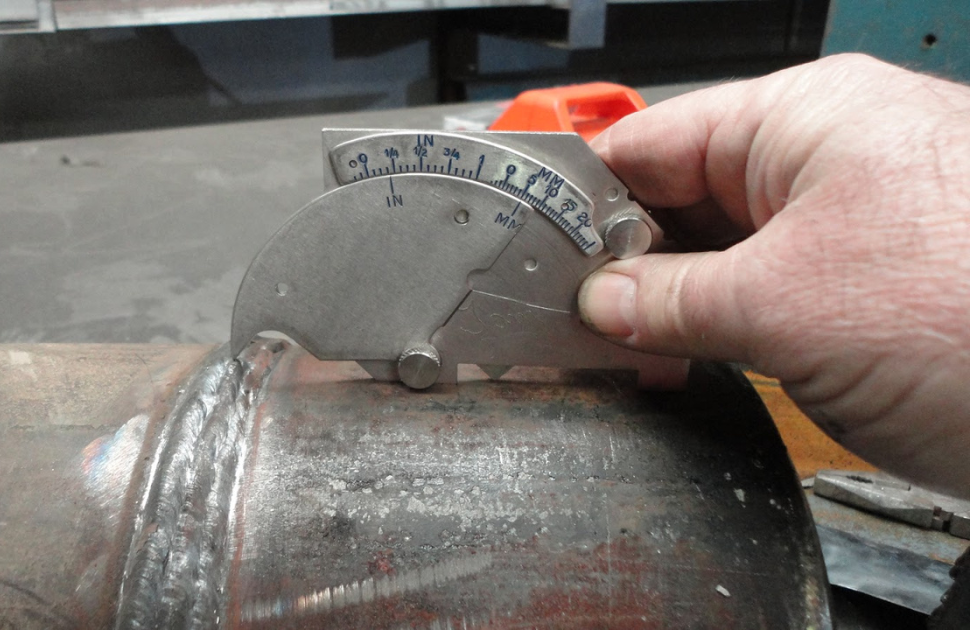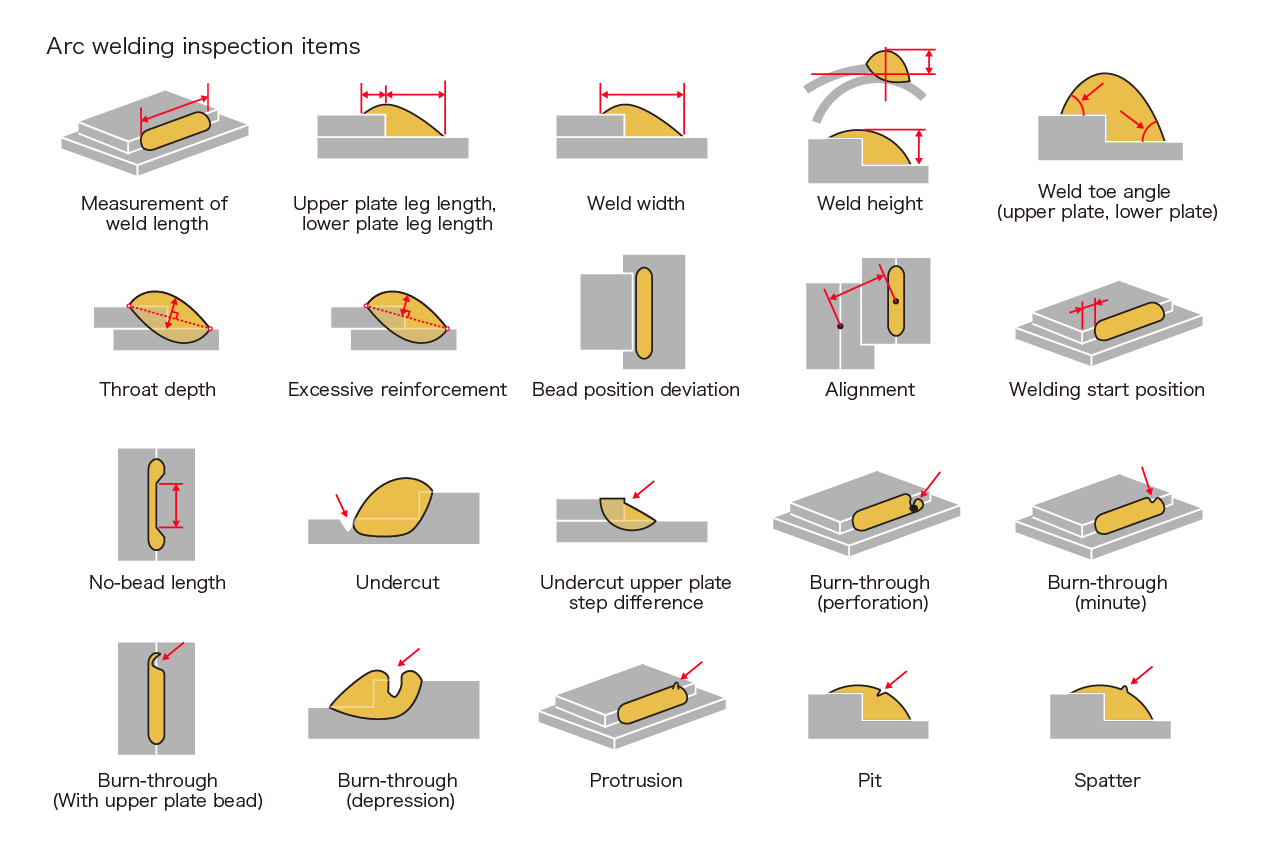The Important Role of Welding Inspection: Recognizing the Procedures, Devices, and Standards That Govern Top Quality Evaluation in Welding Operations
Welding assessment is an indispensable part of top quality assurance in welding operations, ensuring the architectural honesty and safety and security of bonded assemblies. Recognizing the interaction between evaluation techniques and regulatory conformity elevates crucial concerns regarding the challenges encountered in preserving these vital methods.
Significance of Welding Evaluation
Welding evaluation is crucial in guaranteeing the honesty and security of bonded frameworks, as it regularly works as the final checkpoint before parts are taken into solution. The significance of this inspection depends on its ability to determine prospective issues that may endanger the performance and longevity of welded joints. Offered the high stakes entailed, especially in fields such as building, aerospace, and automotive, detailed evaluation procedures are essential.
Welding issues can occur from numerous elements, consisting of improper strategies, inadequate devices, or improper materials. Failure to detect these problems can bring about catastrophic consequences, consisting of architectural failings, which might result in injury, death, and substantial economic obligations. Welding inspection supplies an organized approach to examine the top quality of welds, guaranteeing conformity with sector standards and governing requirements.
Furthermore, efficient welding assessment adds to boosting total productivity by reducing rework and guaranteeing that jobs stay on timetable. By cultivating a society of quality control, organizations can also increase their credibility and customer count on. Fundamentally, the importance of welding evaluation can not be overstated, as it plays a critical role in safeguarding both human lives and investments in framework.
Key Evaluation Procedures
An extensive approach to inspection treatments is crucial for making certain the top quality and integrity of bonded joints. Efficient inspection begins with pre-weld analyses, which include evaluating welding specs, material residential properties, and joint styles to recognize prospective obstacles. This prep work stage develops a baseline for top quality expectations.
Throughout the welding procedure, in-process assessments are important. Inspectors monitor criteria such as warm input, travel rate, and electrode angle to guarantee compliance with well established standards. Aesthetic evaluations are the first line of protection, enabling the identification of surface area flaws, such as fractures, porosity, or incomplete combination.
Post-weld evaluations entail advanced techniques to examine the integrity of the joint. This may consist of non-destructive screening (NDT) techniques such as ultrasonic screening, radiographic screening, or magnetic particle testing. These strategies supply much deeper insights right into the internal framework of the weld, disclosing prospective flaws that may not be visible externally.
Documentation plays an essential duty throughout the inspection process. Detailed records of inspections, including findings and restorative activities, ensure traceability and accountability, eventually contributing to continuous improvement in welding techniques and general quality control.
Important Equipment for Evaluation
Effective examination relies upon making use of specialized tools developed to assess the high quality and stability of bonded joints. Trick devices in this process consist of aesthetic assessment devices, such as multiplying glasses and borescopes, which allow inspectors to determine surface problems and irregularities. Additionally, ultrasonic testing (UT) devices plays an essential role by utilizing high-frequency sound waves to discover inner flaws within welds, guaranteeing that hidden weaknesses are identified before they bring about failing.
Radiographic screening (RT) is one more crucial method, utilizing X-rays or gamma rays to generate photos of the welds, exposing interior problems that may not show up through various other assessment approaches - Houston Welding Inspection. Magnetic particle screening (MT) is utilized for ferromagnetic materials, allowing inspectors to find surface area and near-surface flaws by applying electromagnetic fields and great fragments
Dye penetrant testing (PT) is also substantial, including the application of a fluorescent dye to expose surface area fractures and gaps. Each of these tools and strategies adds to a detailed examination strategy, making certain that welded structures satisfy the essential high quality standards and continue to be safe for usage in their respective applications.

Sector Standards and Rules
Quality guarantee in welding assessment is dramatically affected by sector criteria and laws that regulate methods and ensure safety and security. These requirements act as benchmarks for quality, detailing the needed procedures for assessment, screening, and paperwork. Secret organizations such as the American Welding Society (AWS), the American Society of Mechanical Engineers (ASME), and the International Company for Standardization (ISO) establish standards that welding professionals need to stick to throughout the examination procedure.
Compliance with these criteria is not only an issue of governing responsibility however likewise an important component of danger management in welding operations. They incorporate different facets, including product selection, welding techniques, and credentials of personnel. AWS D1.1 outlines architectural welding needs, while ISO 3834 defines high quality requirements for welding procedures.
In addition, market laws determine the essential credentials for welding inspectors, necessitating accreditations that affirm their knowledge. This positioning with blog here criteria makes sure that assessments are carried out consistently and precisely, eventually securing the honesty of welded structures. Adhering to these industry requirements and regulations is paramount in advertising operational performance and keeping public count on in welding practices.
Difficulties in Welding Assessment


Welding evaluation encounters many challenges that can influence the reliability and security of welded frameworks. One significant difficulty is the intricacy of the welding refines themselves, which can differ substantially depending upon products, joint configurations, and ecological conditions. This variability requires a thorough understanding of diverse inspection strategies and their suitable applications.
One more obstacle hinges on the developing nature of welding modern technology. As new materials and techniques are presented, assessors must continually upgrade their knowledge and skills to successfully review the top quality of welds. In addition, the physical accessibility of weld locations can hinder evaluation initiatives, specifically in confined or high-risk environments.
Furthermore, human factors play a vital duty in welding inspection. Houston Welding Inspection. The subjective nature of visual inspections can lead to disparities, as different inspectors might interpret the same weld differently. This underscores the relevance of standardized training and certification for inspectors to make certain a consistent approach to quality assessment
Lastly, the assimilation of innovative modern technologies, such as automated examinations and expert system, offers both chances and challenges. While these technologies can boost precision and performance, they likewise need considerable investment and competence to carry out properly. Attending to these difficulties is important for keeping the stability of welded frameworks.
Conclusion
Welding evaluation is essential for ensuring the security and stability of bonded structures. Through rigorous evaluation treatments, the use of specialized tools, and adherence to identified industry standards, the high quality of welding procedures can be systematically evaluated. Obstacles linger in the assessment process, yet the execution of efficient strategies can mitigate risks linked with structural failures. Ultimately, a robust welding evaluation framework not only guarantees compliance with laws yet likewise boosts overall operational performance and reliability.
Welding assessment is an important component of quality assurance in welding procedures, making sure the structural stability and security of bonded settings up.Welding evaluation is crucial in making certain the stability and safety and security of welded structures, as it often offers as the final checkpoint before components are placed into service. Welding evaluation supplies an organized technique to assess the click here now quality of welds, guaranteeing conformity with industry criteria and regulative needs.
Quality assurance in welding inspection is substantially affected by sector criteria and guidelines that regulate methods and guarantee security. Secret companies such as the American Welding Culture (AWS), the learn the facts here now American Culture of Mechanical Engineers (ASME), and the International Organization for Standardization (ISO) establish guidelines that welding professionals must stick to throughout the assessment procedure.